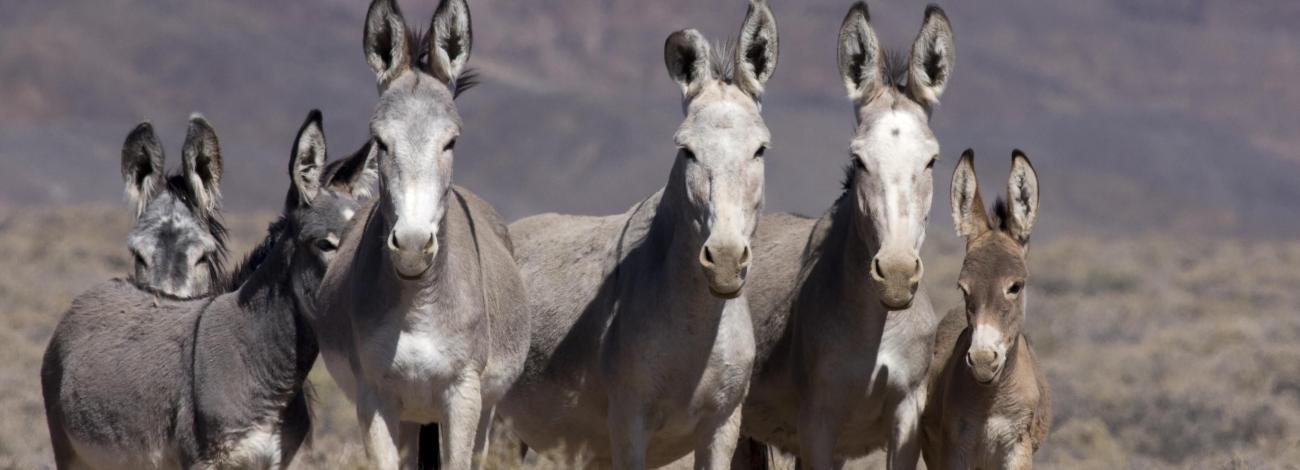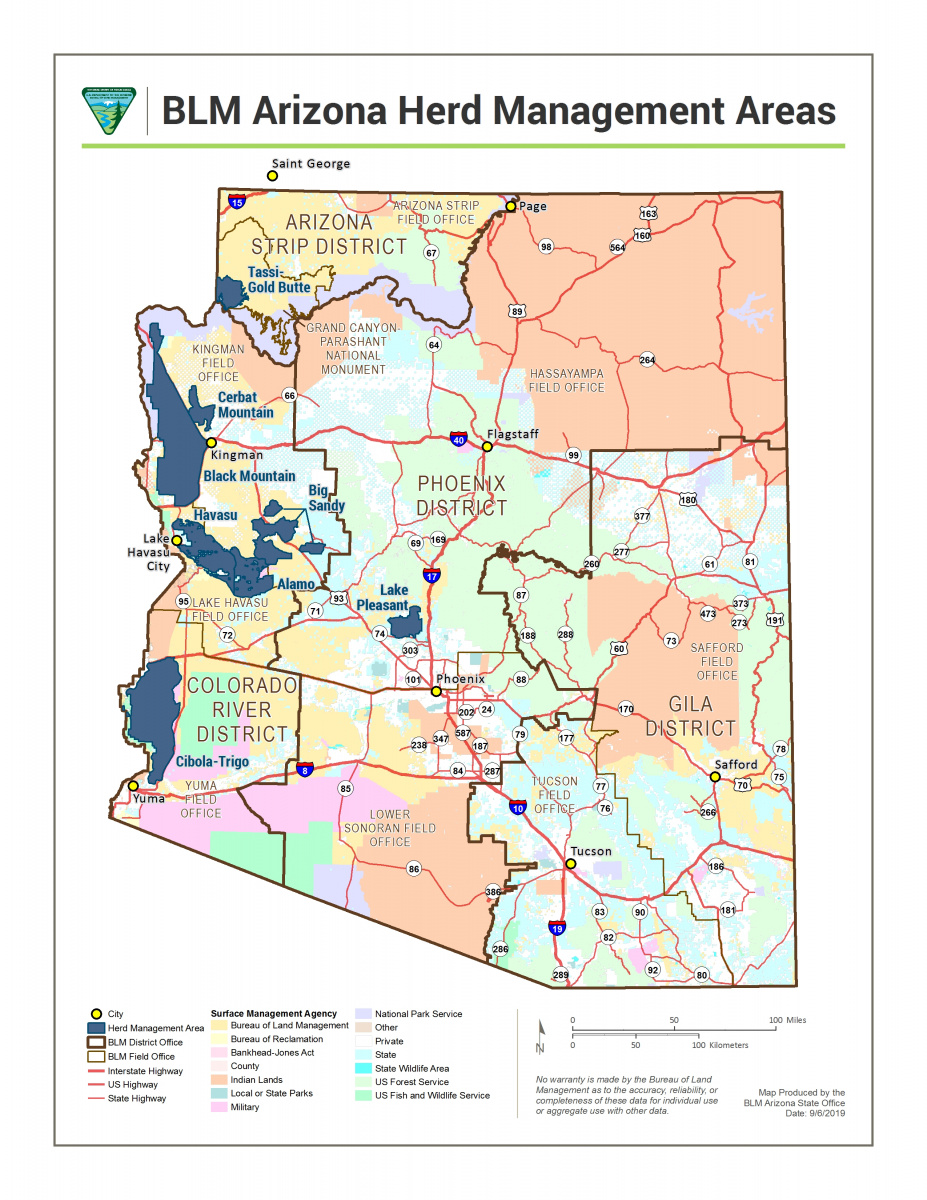
Alamo Herd Management Area (HMA)
Left alone in this remote region with few natural predators, the wild burro population here flourished to more than 1,000 animals by the mid-1970s. The first wild burro capture effort by the Bureau of Land Management (BLM) in Arizona took place near Alamo Lake. In 1977, and again in 1979, nearly 900 animals were removed from this HMA, lowering the population to about 200. Today, the burro population is estimated to be about 550.
Location: The Alamo Herd Management Area (HMA) lies in west central Arizona on lands adjoining Alamo Lake and portions of the Bill Williams, Santa Maria and Big Sandy rivers. This HMA can be reached by driving west from Wickenburg on U.S. Highway 60 (about 50 miles toward Wenden) and then north 30 miles on a paved county road toward Alamo Lake State Park.
Size: The Alamo HMA encompasses around 341,000 acres. It is bordered on the north by the Big Sandy HMA and on the west by the Havasu HMA.
Topography/Vegetation: Wild burros roam freely throughout this area, which is largely steep, rock and rugged. The lower areas contain gentle slopes cut with broad sandy washes. Sonoran Desert vegetation, including paloverde and ironwood trees, grow among the washes. Summers are hot with temperatures occasionally exceeding 120 degrees.
Wildlife: Wild burros share this habitat with desert bighorn sheep, desert mule deer, coyotes, fox, jackrabbits and a variety of small desert mammals. Other animals making their homes here include the desert tortoise and several species of lizards and rattlesnakes. Bald eagles and southwestern willow flycatchers can be spotted in the sky.
AML: 128-160

